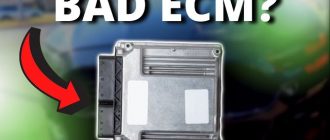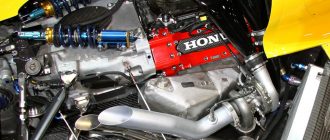## **Can Water in the Engine from Heavy Rain Stall Car?**
**Introduction**
Heavy rainfall can bring about a multitude of concerns for car owners, including the potential for water ingress into the engine. While modern vehicles are designed to withstand exposure to water, excessive amounts of rainwater can overwhelm these protective measures and lead to engine problems. This article explores the impact of water in the engine, particularly during heavy rain, and examines the potential implications for car performance, including stalling.
**How Can Water Enter the Engine?**
Water can enter the engine through various pathways, including:
– **Air intake:** Water can be sucked into the engine’s air intake during heavy rain, particularly if the vehicle is driving through deep puddles or submerged areas.
– **Exhaust system:** Water can backtrack into the engine through the exhaust system if the car stalls while attempting to pass through a flooded area.
– **Leaking gaskets or seals:** Worn or damaged gaskets or seals can allow water to seep into the engine compartment and come into contact with sensitive electrical components.
**Consequences of Water in the Engine**
The presence of water in the engine can have several adverse effects, including:
– **Electrical malfunction:** Water can cause electrical components to short-circuit, leading to loss of engine power and potential stalling.
– **Engine seizure:** Water can mix with engine oil, diluting its lubricating properties and potentially causing the engine to seize.
– **Corrosion:** Water can accelerate corrosion of engine components, leading to long-term damage and reduced engine lifespan.
**Can Water in the Engine Stall Car?**
Yes, water in the engine can cause the car to stall. Water in the air intake can disrupt the air-fuel mixture, making it difficult for the engine to run smoothly and potentially leading to stalling. Additionally, water in the exhaust system can create backpressure, causing the engine to stall as it struggles to expel exhaust gases.
**Warning Signs of Water in the Engine**
Several warning signs may indicate the presence of water in the engine, including:
– **Rough engine idle:** The engine may idle rough or misfire due to a disrupted air-fuel mixture.
– **White or blue smoke from the exhaust:** Water can vaporize inside the engine, creating white or blue smoke from the exhaust.
– **Electrical problems:** Water can cause electrical components to malfunction, resulting in issues such as flickering lights or loss of power.
– **Stalling:** The engine may stall repeatedly or have difficulty starting if water has entered the engine and is affecting critical components.
**Preventing Water Ingress into the Engine**
To prevent water from entering the engine, consider the following measures:
– **Avoid flooded areas:** Drive cautiously during heavy rain and avoid driving through large puddles or submerged areas.
– **Use a hood scoop:** Installing a hood scoop can help direct water away from the engine’s air intake.
– **Check gaskets and seals:** Regularly inspect gaskets and seals for signs of wear or damage and replace them promptly.
– **Install water-resistant components:** Choose water-resistant electrical components, such as spark plugs and wires, to minimize the risk of electrical malfunctions.
**What to Do If Water Enters the Engine**
If you suspect water has entered the engine, take the following steps:
– **Turn off the engine immediately:** This will prevent further damage to the engine.
– **Tow the car to a mechanic:** Do not attempt to restart the engine or drive the car.
– **Explain the situation to the mechanic:** Inform the mechanic about the circumstances under which water may have entered the engine.
– **Allow the mechanic to assess the damage:** The mechanic will diagnose the extent of the water damage and recommend necessary repairs.
**Conclusion**
While modern vehicles are designed to resist water ingress, heavy rain can still pose a risk of water entering the engine. Water in the engine can cause a range of problems, including electrical malfunctions, engine seizure, and stalling. By understanding how water can enter the engine and recognizing the warning signs, car owners can take steps to prevent water ingress and mitigate the potential consequences. If water does enter the engine, it is crucial to turn off the engine and seek professional assistance promptly to avoid further damage.




